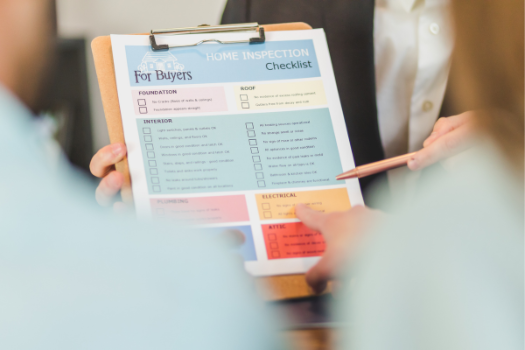.png)
How to Spot Risky Projects Before You Commit
Jumping into a project too quickly can cost you. In construction, it’s not just about time or money. It’s your reputation, your team’s workload, and your future work. That’s why spotting risky projects early is so important.
Some projects come with hidden problems—bad planning, unclear goals, or poor budgets. Others might look good at first, but turn into a mess later on. If you can catch the warning signs early, you can save yourself from big headaches down the road.
This guide will walk you through what to look out for. You’ll learn how to spot red flags, how to assess risk properly, and how to protect your business from bad decisions. Whether you're a contractor, builder, or project manager, this is your step-by-step game plan before saying yes to any job.

Understanding Project Risk
Project risk means anything that could go wrong. It’s the stuff that could delay your work, hurt your budget, or even stop the project completely. In construction, that risk comes in many forms.
Some risks are tied to the project itself. Maybe the designs aren’t done, or the client changes their mind a lot. Other risks come from outside—like weather, supply chain issues, or labor shortages.
Common red flags include:
- Missing permits or unclear zoning
- Unrealistic deadlines
- Budgets that seem too tight
- Vague contracts or last-minute changes
When you ignore those risks, you put everything on the line. You can lose money. You can lose trust. And worst of all, you lose time—something you can never get back.
Understanding risk early helps you avoid all that. It gives you control. You can plan better. You can ask better questions. And you can say “no” when it’s the smart thing to do. Spotting trouble before it starts is what keeps you in business long-term.
Key Indicators of Risky Projects
Some projects scream trouble. Others whisper it. Either way, there are signs you can watch for.
Here are a few red flags:
- The scope is unclear or changes often
- The budget seems off or incomplete
- The timeline feels rushed from day one
- The client avoids direct questions
- The project lacks detailed planning
Also watch out for vague contracts or confusing payment terms. If something feels off, it probably is.

Let’s look at an example. Say a builder signs a job with a tight budget. Halfway through, the client adds work without more pay. The builder either eats the cost or delays the job. That’s a risk that could’ve been spotted earlier—if the signs were caught.
Use a checklist when reviewing new jobs. Ask questions like:
- Is the client reliable?
- Is the funding secure?
- Are the designs clear and final?
- Are the timelines realistic?
Don’t just go by gut feeling. Use a system to look deeper. That way, you’ll know what you’re walking into—and whether it’s worth the risk.
Conducting Effective Risk Assessments
A good risk assessment doesn’t have to be complicated. You just need a plan. Here’s a simple way to do it:
Step 1: Start with the scope. Is the project clear? Are the deliverables defined?
Step 2: Review the client. Have they worked with others in your field? Do they pay on time?
Step 3: Look at the budget. Is it fair for the size and timeline of the job?
Step 4: Check the schedule. Are the deadlines doable? Is there room for delays?
Step 5: Inspect the site. Any access issues? Environmental hazards? Unknown conditions?
Also involve your team. Ask for input from the people who will do the work. They’ll often see risks you don’t.
Create a short report. List the risks you found and how big the impact could be. Then decide what to do. Can the risk be avoided? Reduced? Or is it just too much?
Don’t skip this step. A two-hour review could save you from a six-month nightmare. It’s not just smart—it’s necessary.
Leveraging Technology for Risk Management
You don’t need fancy tools to spot risk—but the right tools can help.
Digital checklists, cloud-based planning boards, and team tracking apps make it easier to stay on top of everything. They help you catch delays, flag issues, and document decisions.

Using data also helps. If a certain type of project always goes over budget, the numbers will show it. You can learn from past jobs and spot patterns early.
Many builders use dashboards to track project health. These show you key numbers in real time—budget, timelines, and more.
The goal isn’t to replace your judgment. It’s to back it up. When you mix gut instinct with clear data, you make better calls. You avoid trouble. And you protect your crew and your company from risks that don’t need to happen.
Conclusion
Risk is part of the job—but avoidable risk doesn’t have to be. By taking time to review each project before committing, you set yourself up for success. The red flags are there if you know where to look.
Use checklists. Ask questions. Use tools that help you stay organized. And never ignore your gut.

Your time and reputation matter. Don’t spend them on projects that don’t deserve it.
The smartest builders aren’t just good at building. They’re great at knowing when to walk away. That’s what keeps them growing—job after job.